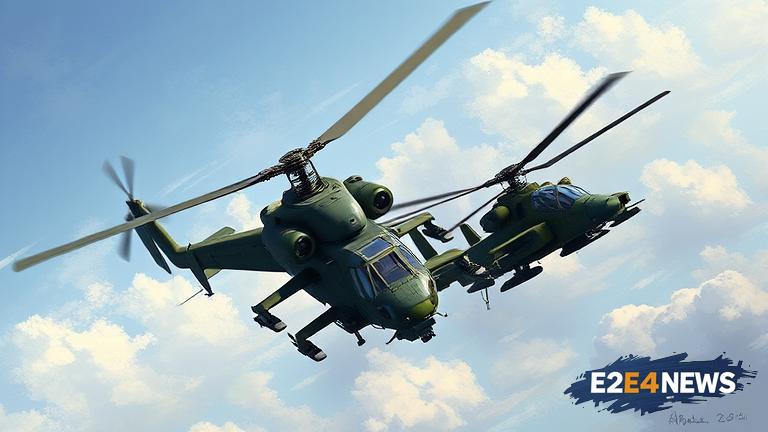In 2010, the Indian military was faced with a critical decision regarding the procurement of new attack helicopters. The two main contenders were the Russian Mi-28NE Night Hunter and the American Apache. The Mi-28NE, a derivative of the Mi-28 Havoc, boasted impressive firepower and maneuverability, making it a formidable opponent on the battlefield. On the other hand, the Apache, with its advanced avionics and precision-guided munitions, had already proven itself in various combat scenarios around the world. The Indian Air Force (IAF) had been seeking to replace its aging fleet of Mi-25 and Mi-35 helicopters, and the competition between the Mi-28NE and Apache was fierce. The Russian manufacturer, Rosoboronexport, had been aggressively marketing the Mi-28NE, highlighting its capabilities and competitive pricing. Meanwhile, the American manufacturer, Boeing, was touting the Apache’s advanced technology and interoperability with other US-made systems. The IAF had conducted extensive trials of both helicopters, evaluating their performance in various environments and scenarios. The Mi-28NE had demonstrated its ability to operate in high-altitude and hot conditions, making it an attractive option for India’s diverse terrain. However, the Apache’s advanced sensors and targeting systems gave it an edge in terms of precision and accuracy. The Indian government was also considering the geopolitical implications of the procurement, with the US and Russia vying for influence in the region. Ultimately, the decision would depend on a variety of factors, including cost, performance, and strategic considerations. The Mi-28NE had a proven track record of reliability and maintainability, but the Apache’s advanced avionics and networking capabilities made it a more attractive option for future upgrades and integration. The competition between the two helicopters was not just about the machines themselves, but also about the broader strategic partnerships between India and the US and Russia. The Indian military was seeking to modernize its capabilities and expand its reach, and the procurement of new attack helicopters was a critical component of this effort. The Mi-28NE and Apache represented two different approaches to military modernization, with the Russian helicopter emphasizing brute force and the American helicopter emphasizing precision and technology. The decision would have significant implications for India’s military posture and its relationships with other nations in the region. The IAF was under pressure to make a decision, as the aging fleet of Mi-25 and Mi-35 helicopters was in dire need of replacement. The Mi-28NE and Apache were both capable machines, but the Indian military had to consider a range of factors beyond just performance and cost. The procurement process was complex and involved multiple stakeholders, including the IAF, the Indian Army, and the Ministry of Defence. The decision would require careful consideration of India’s strategic priorities and its relationships with other nations. The Mi-28NE and Apache were just two of several options being considered, but they were the most prominent contenders. The Indian military was seeking to acquire a helicopter that could operate effectively in a variety of environments and scenarios, from counter-insurgency to high-intensity combat. The Mi-28NE and Apache both had their strengths and weaknesses, and the Indian military had to weigh these carefully in making its decision. The procurement process was expected to be lengthy and complex, with multiple rounds of trials and evaluations. The Indian government was under pressure to make a decision, as the security situation in the region was becoming increasingly volatile. The Mi-28NE and Apache were both capable machines, but the Indian military had to consider a range of factors beyond just performance and cost. The decision would have significant implications for India’s military posture and its relationships with other nations in the region.
